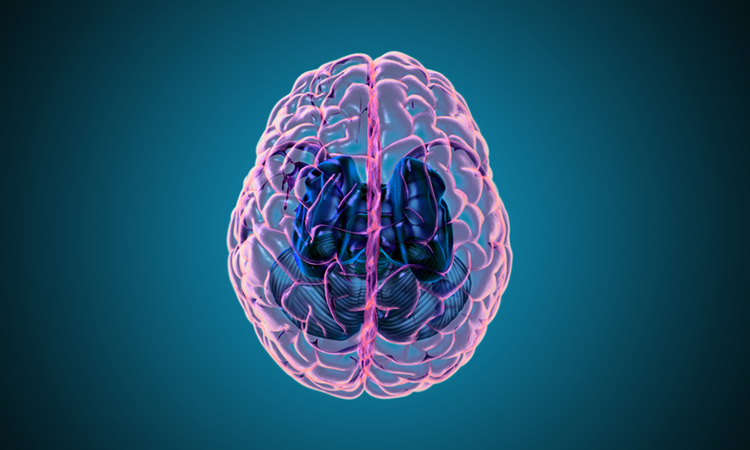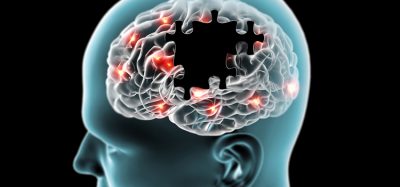The vision of neuroscience with Stephanie Proaño
Posted: 11 January 2024 | Dr Stephanie Proaño (Cell Microsystems), Taylor Mixides (Drug Target Review) | No comments yet
Stephanie Proaño, an Applications Scientist at Cell Microsystems shares profound insights into her neuroscience journey. From challenging the historical underrepresentation of women in brain research to navigating the complexities of studying sex differences, Stephanie’s career has been defined by pivotal moments. She discusses the importance of inclusivity in science, recounting personal challenges and the strategies she employed for professional growth.
Stephanie highlights collective initiatives and organisations fostering diversity in neuroscience, emphasising the need for a more representative scientific community. Looking ahead, she envisions storytelling as a powerful tool to dismantle barriers and amplify diverse voices, drawing inspiration from her participation in WIN’s storytelling session. Stephanie Proaño emerges as a dedicated advocate, not only advancing our understanding of brain physiology but also actively contributing to a more inclusive and equitable future in neuroscience.


Could you share a pivotal moment in your career which has shaped your approach to neuroscience? Can you recount an instance where your experiences contributed to expanding the scientific discourse and fostering a more inclusive environment in the field?
Through my graduate and post-graduate work, I sought to understand the mechanisms underlying sex differences in brain physiology and pathology. Although there is no such thing as a strictly female or male brain, our brains and those of many other species are a sort of mosaic in which sex differences manifest differently across brain regions through distinct physiological mechanisms. Studying sex differences became imperative to me when it was evident that most of what we know about the brain has been studied in the male brain.
For many decades, researchers have shied away from studying the female brain because of the incorrect assumption that the ovarian hormone cycle brings inherent variability that is hard to control in the lab. The idea that we don’t understand the brain physiology of almost 50 percent of the population was, and still is, utterly preposterous to me. This realisation was a pivotal moment in my career and in my approach to neuroscience because it solidified my purpose in bridging this knowledge gap. Through my research, I discovered that the electrophysiology of the major output neurons in the striatum, the reward centre of the brain, not only differs between females and males but is also dependent on the various phases of the ovarian hormone cycle. This knowledge aligned with and supported previously documented sex differences in motivated behaviours and pathophysiologies, such as addiction. Importantly, my findings showed that research on both females and males is indeed possible to do.
Thinking beyond science, recognising that most of our knowledge on the brain comes from studies that only included males as research subjects, becomes a social issue when our science is meant to inform how therapeutics and treatments are developed for both women and men. We, as scientists, have the responsibility to understand the biology of the entire population, not just a subset, especially when taxpayers–both female and male–foot the bill for most of our scientific endeavours through public funding.
Could you elaborate on a specific challenge you encountered and the strategies you employed to not only overcome it but also harness it as a catalyst for personal and professional growth?
The biggest challenge that I have faced in my career has been trying to convince others–scientists and the lay public alike–the importance of investigating how sex steroid hormones modulate and establish sex differences in brain physiology, behaviour, and pathology. Because this area has been historically understudied, scientists who investigate these kinds of questions have to address two issues on top of ensuring that our science is rigorous. One, we have to demonstrate that our knowledge of the brain is limited because we have mostly studied males; and two, show that females are not inherently more variable than males and are thus not impossible to study. In a way, this is a bit of a paradigm shift that can be hard to accept. Having this at the back of my mind while doing experiments that may or may not work was a definite test of resilience. I think that the nature of the scientific method is fundamentally challenging, especially when you come up against tradition. Because of this, I realised early on in my career that I had to learn to rely on my scientific and personal network, whether it was to discuss science or simply to get emotional support. In that, also came the need to expand my network since it became evident that I needed friends and colleagues at various career stages and with different kinds of professional and scientific backgrounds. This kind of diversity enriched my scientific and personal journeys because of everyone’s different perspectives. I think as much as we like to focus on the greatness of our scientific accomplishments, which is important, it is also necessary to remember that science is a human endeavour, and as such, we need to rely on each other.
Can you share insights into concrete actions or initiatives, either personal or collective, that you believe have been instrumental in promoting a more inclusive and equitable landscape in neuroscience?
For many decades, science was a cisgendered-heterosexual-Caucasian-male dominated arena. It wasn’t a space where women, people of colour, or those who are part of the LGBTQ community, for example, had much of a voice. Fortunately, this has been changing and we are seeing more people from these groups in graduate programs, in early-stage professorships, and in some leadership positions across scientific organisations. As a Latinx woman, myself, it has been impactful to see this increase in representation because it changes the reality of what is possible. Initiatives taken by professional organisations such as Black in Neuro, the International Brain Research Organization (IBRO), World Women in Neuroscience (WIN), among others, are instrumental in the professional development of scientists who may not necessarily have the social and/or economic advantages to feel competitive in the scientific world, whether it is in academia or in industry. These organisations and diversity initiatives provide a forum for all to share their stories, build their networks, and inform their approach to science so that even the topics we study become more inclusive.
Personally, programmes such as the Summer Program in Neuroscience Ethics and Survival (SPINES) from the Marine Biological Laboratory and the World Women in Neuroscience (WIN) organization gave me a community of peers from minority backgrounds. They have supported me and have inspired me both in terms of their approach to science and in the various ways in which they have chosen to forge their careers. It has been monumental to have a space in which I can feel represented, have the forum to share my own experiences as a Latinx woman and scientist, and where I can learn from everyone’s unique perspectives in a professional world that can, at times, feel isolating or alienating. Science takes a lot of grit and the impetus and inspiration to, first, pursue this career path and, second, remain in it stems from the courage that earlier generations had in laying down the foundation so that people like me can have a place at the table. Now, my generation’s challenge is to make the field of Neuroscience an inclusive environment where all can feel valued and accepted, especially those who come from minority backgrounds.
As we envision the future trajectory of neuroscience, how do you foresee the role of storytelling in dismantling barriers and ensuring that a multitude of voices continue to be heard, valued, and contribute to the evolving narrative of scientific discovery?
As science and scientists continue to evolve, the role of storytelling in dismantling the barriers that stand against a diverse and inclusive environment will become even more critical than what it is today. We have surely made steps in showcasing stories of scientific resilience. However, we need to increase the visibility of more stories, especially from those whose scientific and personal journeys have defied the odds that derive from a lack of representation. We not only need to hear stories from Nobel laureates who have fundamentally shifted our understanding of biology, but more importantly, we need to hear stories from those who day in and day out are forging their careers and personal journeys in this field, whether it is in academia or industry. Storytelling can be the tool by which we give exposure to these stories and achieve the kind of representation that, hopefully, will not only inform the questions we choose to study but also how we study them.
Recently, at the annual meeting of the Society for Neuroscience, I got the opportunity to partake in a storytelling session organised by the World Women in Neuroscience organization (WIN), whose mission is to improve the professional landscape so that women across the globe can advance their career in neuroscience. Thus, the purpose of the storytelling panel was to showcase the scientific journeys and experiences of scientists at different stages of the career ladder who are women of colour. The stories shared by these scientists were so inspiring because they demonstrated their grit in dealing with the intersectionality of gender, class, colour, country of origin, to name a few, when confronted with a world where just 4 or 5 decades ago they were not supposed to be in. Above all, though, their narratives can become the catalyst for other minority women to pursue a career in science and also instigate the support of more dominant groups in our plight to make neuroscience a more equitable and inclusive space.
About the author


Applications Scientist, Cell Microsystems
In her current role, she is developing commercial operations and scientific applications for automated patch clamp solutions. Before transitioning into industry, Stephanie completed her doctorate at North Carolina State University where she studied sex- and estrous cycle-dependent differences in the electrophysiology of medium spiny neurons in the striatum. Following her doctorate, Stephanie was a postdoctoral fellow at the National Institute of Environmental Health Sciences where she investigated the role of sex- and estrous cycle-dependent differences in the expression of hippocampal region CA2-specific genetic markers and their impact on the electrophysiology of pyramidal neurons in this brain region.
Through her doctoral and postdoctoral work, Stephanie found a passion in championing the inclusion of women in science both by studying their biology and by fostering spaces in industry and academia where women feel included and represented.
Related topics
Neurosciences
Related organisations
Cell Microsystems
Related people
Dr Stephanie Proaño (Cell Microsystems)







